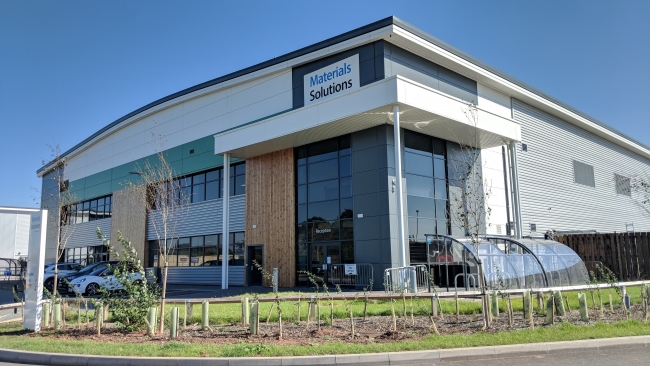3 minute read
Siemens opens 15th UK factory following £27m investment
Siemens is putting the Industrial Strategy into action with the opening of its 15th UK factory in Worcester. Materials Solutions – a Siemens business, which officially opens today (12 December), sees a £27 million investment to create a new state-of-the-art additive manufacturing (AM) factory, taking a traditionally experimental laboratory process and turning it into a valuable industrial practice.
The business is a pioneer in the use of Selective Laser Melting (SLM) technology for the manufacture of high-performance metal parts. The type of things made in the factory range from high temperature components found in gas turbines and jet engines to tooling applications.

Siemens has opened its 15th UK factory, following a £27m investment at its Materials Solutions facility in Worcester / Picture: Siemens
Materials Solutions supplies to a wide range of sectors including oil and gas, power generation, aerospace, automotive, tooling and process industries and motorsport.
It will also support existing Siemens customers injecting additive manufacturing technology into power generation. They will use AM technology to manufacture combustion components for the Siemens designed SGT5-9000HL combined cycle gas turbine which will be used for the first time by SSE at Keadby 2 power station in Lincolnshire.
In a move away from traditional AM processes which usually occur in a laboratory setting, the new factory will adopt a true industrial approach including post-processing and certification, housing multiple machines across a shop floor.
As well as using the manufacturing quality and production techniques, a digital approach is embedded into the site, to create a modern digital factory and to provide an end-to-end service to its wide-ranging customer base. This will give better control over lead-time, quality and cost throughout the development of the product before delivery to the customer.
The investment has allowed Materials Solutions to increase its footprint to 4,700m2 to enable the growth of the business, which currently has 19 machines to more than 50 as well as increasing its post-processing capabilities. In the past year, the number of employees at the factory has risen from 29 to 44 with a plan to employ up to 25 more as part of the expansion.
Juergen Maier, Chief Executive Officer, Siemens plc, said: “Additive manufacturing is a technology that will be at the cutting edge of this exciting new fourth industrial revolution. Our new facility is an example of the Industrial Strategy in action and aligns perfectly with the principles of Made Smarter – outlining how additive manufacturing is a key part of raising productivity and creating a new industry with lots of opportunity for high value, well paid jobs.
‘’The fourth industrial revolution will be much more about smaller agile and very high value technology companies like this and less about the mega factories of the third revolution. But there will be lots of such high-tech companies and we hope this investment will be key to the creation of a globally leading ecosystem for additive manufacturing, here in Worcester and beyond.’’
Greg Clark, Secretary of State for Business, Energy and Industrial Strategy, added: “From trains to wind turbines, Siemens’ new factory in the West Midlands will support the development of components for a range of industries and is further proof of our world leading advanced manufacturing capabilities. Siemens’ investment and opening of its 15th UK factory shows the company’s commitment and belief in the skills and talent of the UK.
“Our modern Industrial Strategy, including the Made Smarter programme, is forging our future by driving investment in tomorrow’s technologies and processes, providing high skilled jobs and boosting our economy.”
Phil Hatherley, General Manager, Materials Solutions Ltd, concluded: “I’m delighted the factory is now open. This exciting expansion allows us to increase our AM capacity and focus on industrialisation of the metals additive manufacturing process, taking it out of the lab and into a production factory. Being able to share today’s opening with our valued customers, our employees and their families and showcase some of the work we do here, makes me very proud.
“The big goal for us now is it to really get behind the industrialisation of additive manufacturing. AM is still cost intensive, but by employing industrial methods to scale-up production we will be able to bring down cost by having the ability to manufacture parts repeatedly in a robust, industrial environment.”